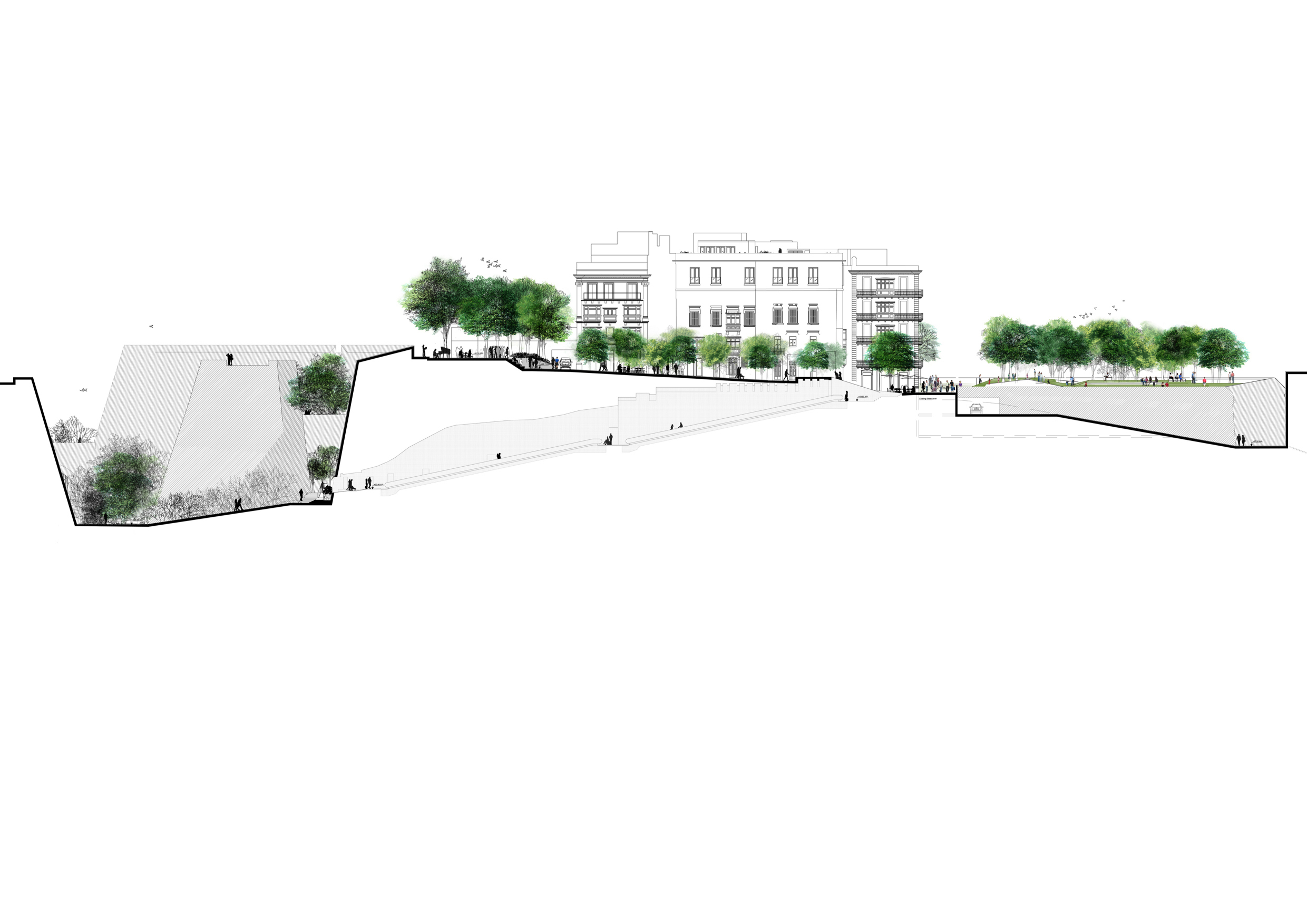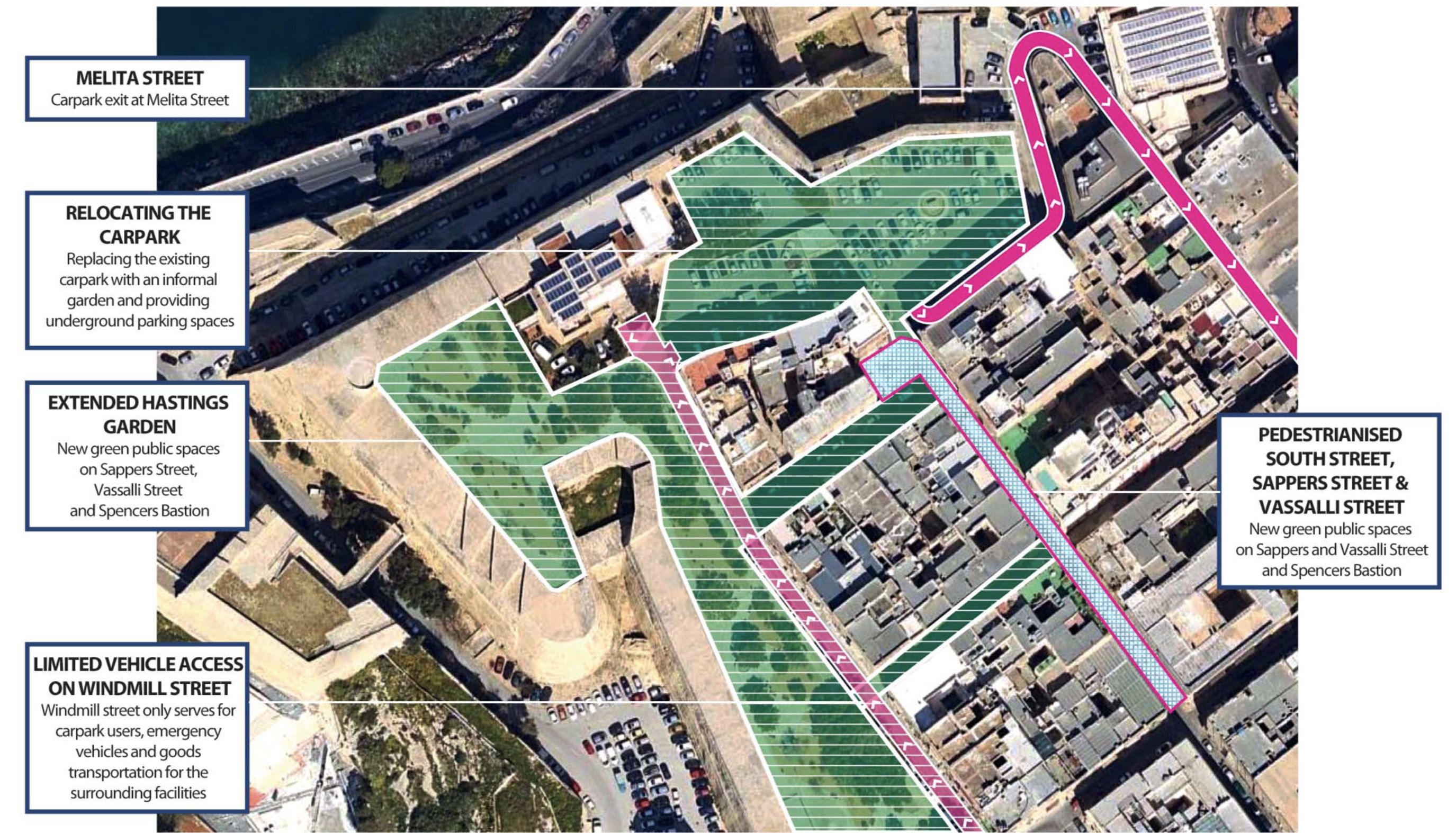Hastings area regeneration proposal
a pilot project.
| Date | 2021–Ongoing |
|---|---|
| Client | n.a. |
| Value | n.a. |
| Location | Valletta, Malta |
With the aim to bring tangible change to the built and unbuilt environment, we have developed a masterplan for the regeneration of the Hastings area in Valletta. The intention is to test (and hopefully implement) a strategic vision for the city and the country which takes into account post-pandemic considerations on the organisation
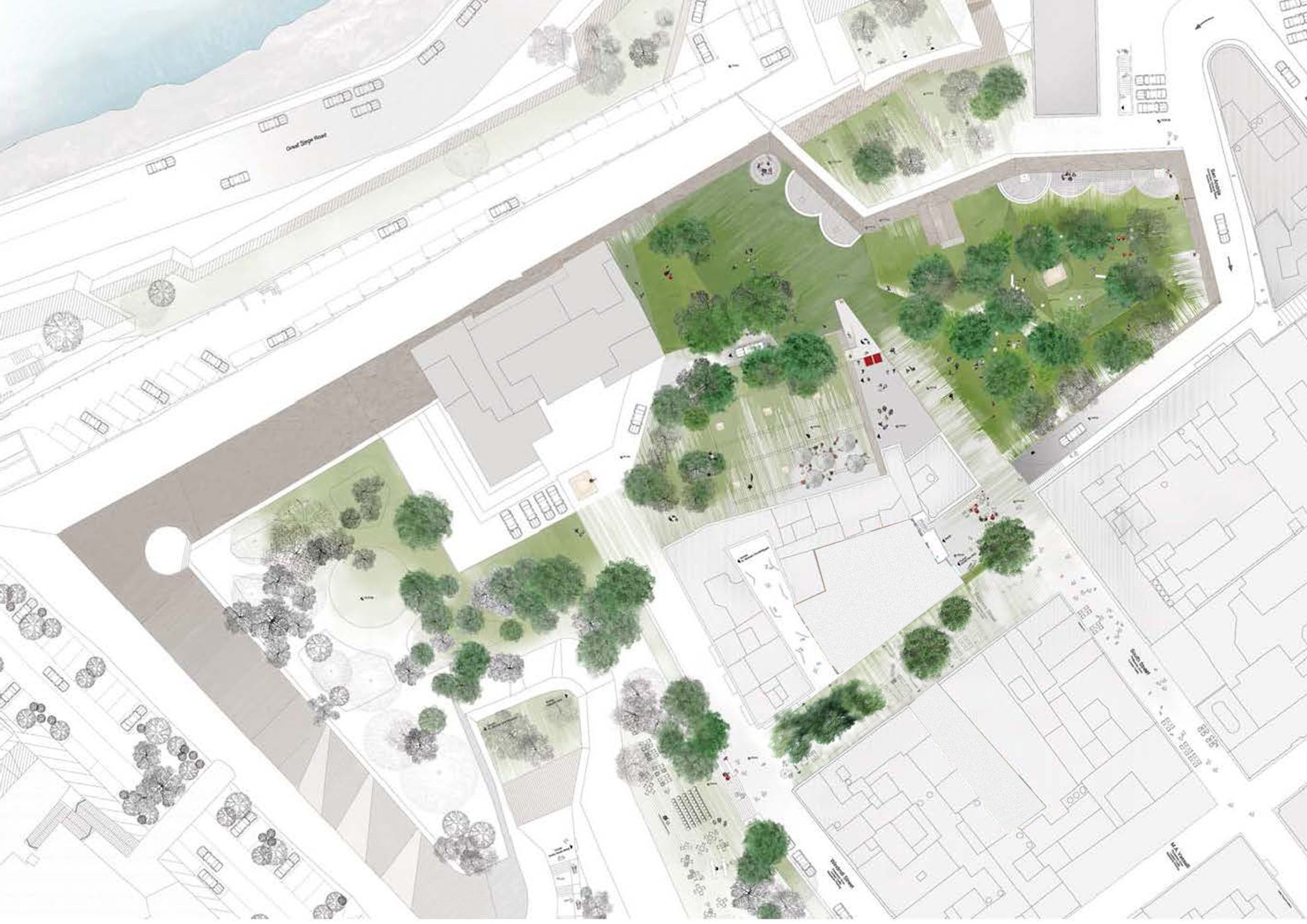
The masterplan proposal comprises the extension of Hastings gardens while introducing an underground car park facility, allowing for the introduction of a new green, pedestrian and public area in Valletta. Moreover, it includes the regeneration and establishment of the new Four Sappers creative cluster, fostering collaboration between creative enterprises as driver for urban and cultural
The proposal revolves around
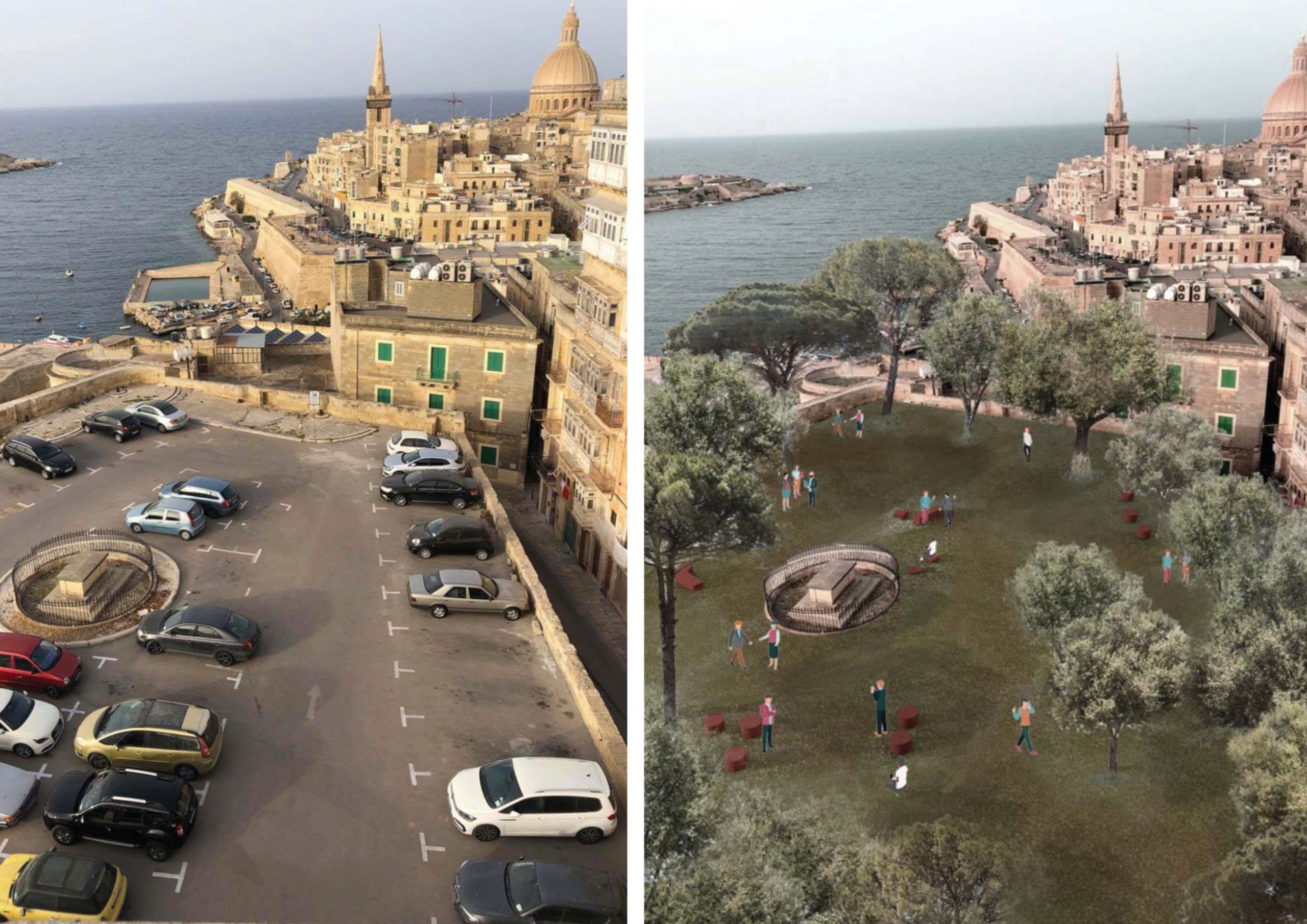
- The upgrading of existing public spaces thanks to the introduction of a new public square and the improvement of the roads.
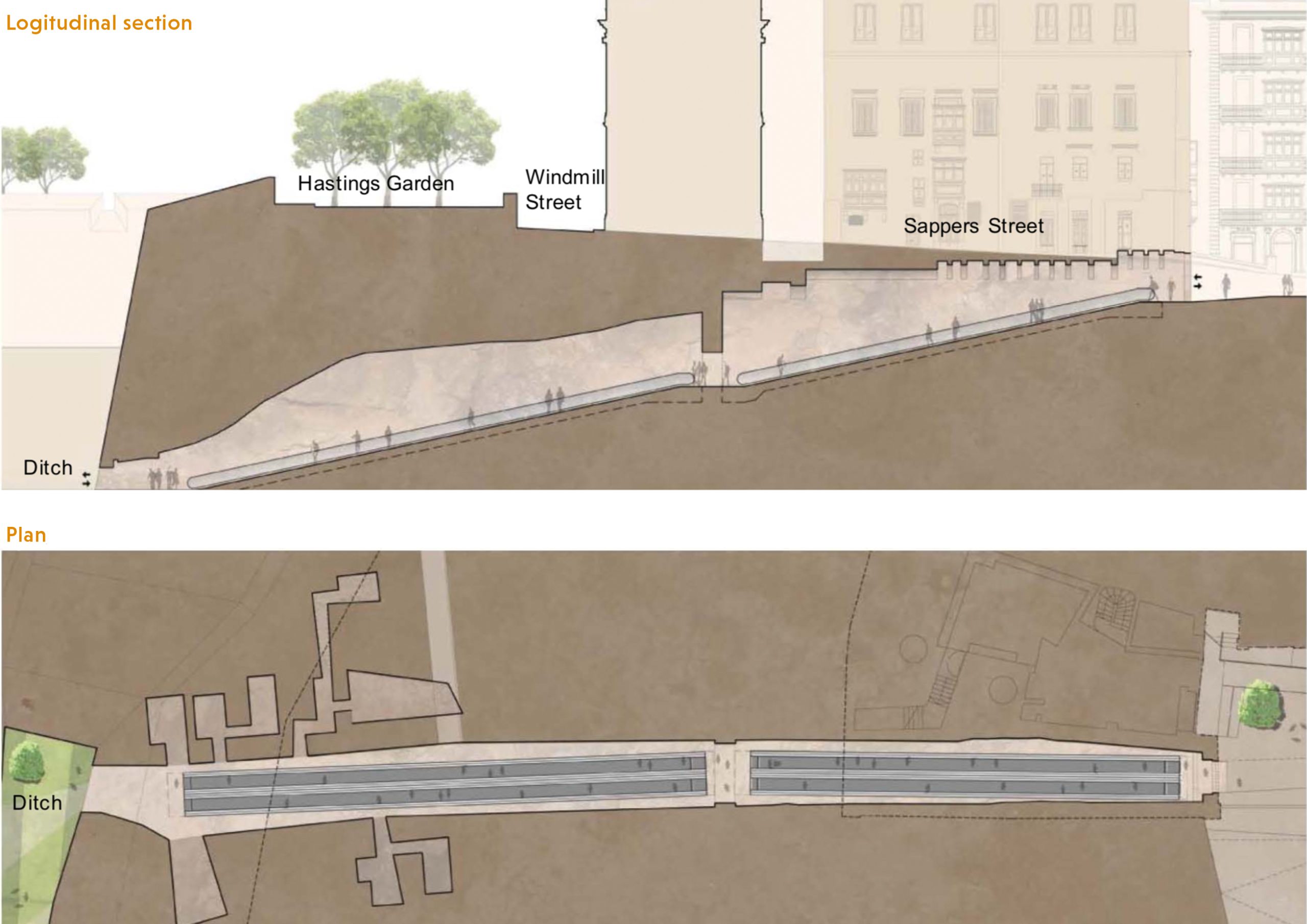
- The regeneration of heritage and the creation of new connections through the restoration and
re-opening of the tunnel connecting the pjazza and the ditch, creating a new connection and a new entrance in to an area of Valletta currently more difficult to reach. - The greening and
re-organisation of car parks, replacing the existing surface car park on St Michael’s bastions with a limited-access-two-storey underground car park and an informal garden on surface extending all the way to the existing Hastings gardens and the surrounding streets.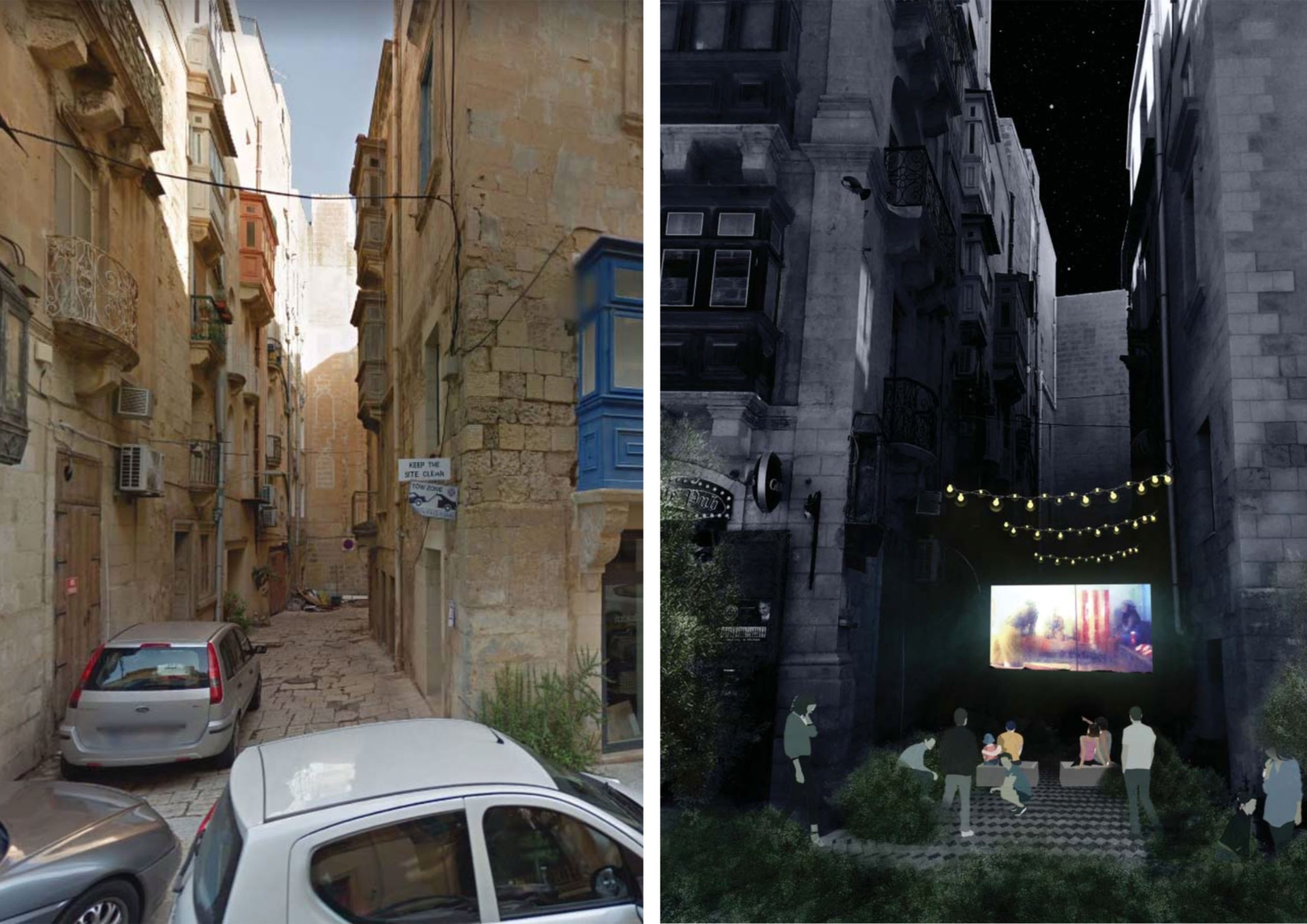
- The creation of opportunities for new, green public spaces, thanks to the re-imagining of currently underused or derelict open spaces, like Sappers Lane that, thanks to the new extended garden, could be transformed into a new
flexible urban space. 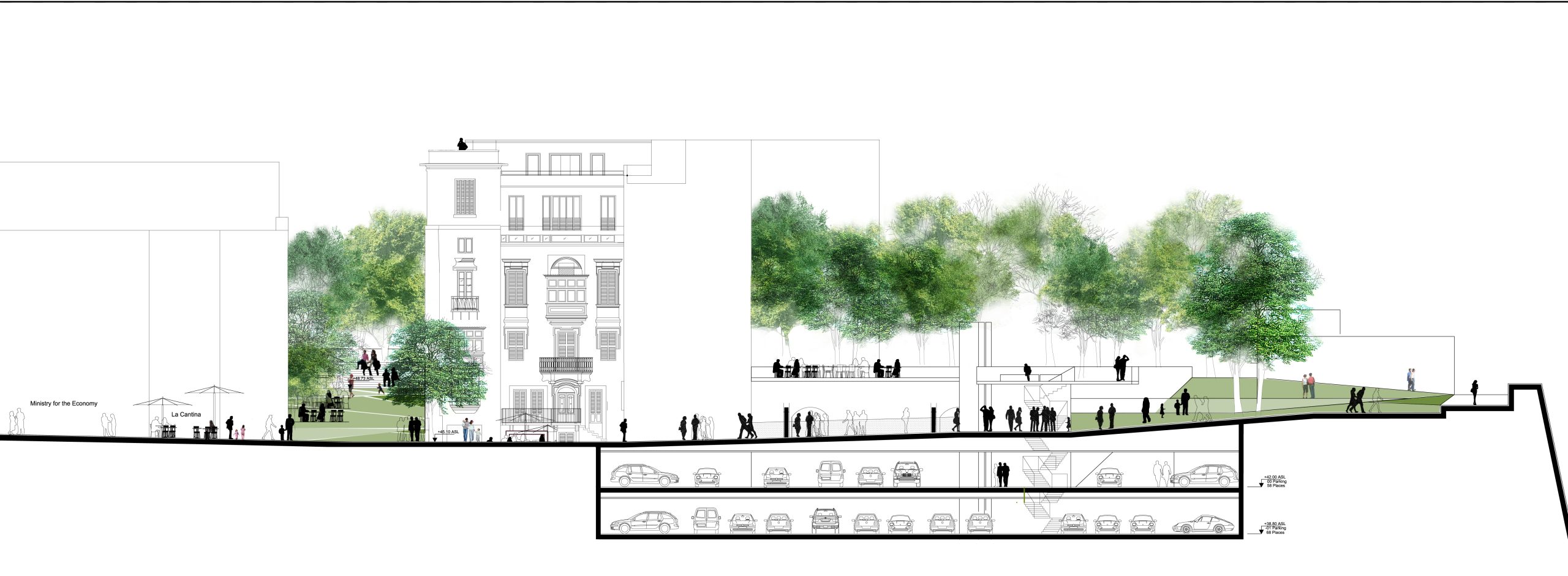
- The transformation of existing unused spaces in new, accessible-to-all and flexible areas for the community.
Culture and sustainability are at the heart of the proposal. We believe that there can be no democratic, peaceful and sustainable development if culture is not at its heart. Culture enables and drives economic, social and environmental sustainability. It shapes our identities and defines our legacies. The value and irreplaceability of our cultural heritage must be underlined, with the emphasis not only on urban areas, like in the case of Hastings in Valletta, but on peripheral and rural areas and their connections as well.
With this masterplan proposal we would also like to encourage interdisciplinary discourse and cooperation among different stakeholders, both public and private. To encourage multilevel and
